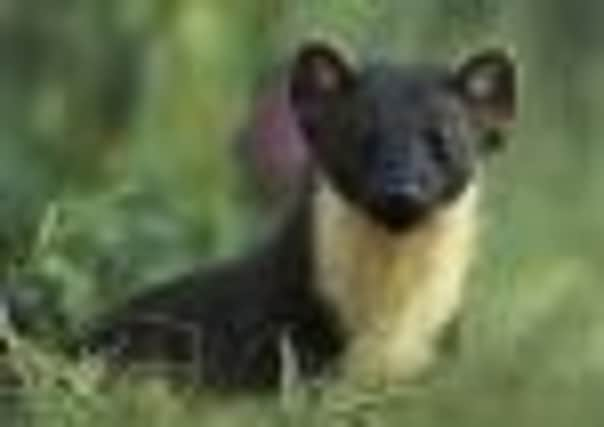Rift over plan to move pine martens


Fears have been raised that the cat-sized predators are having a disastrous impact on the country’s dwindling capercaillie population in the Highlands.
Stewart Stevenson, the environment minister, says he would consider relocating the mammals to other areas if scientific research confirms they are threatening the survival of the largest member of the grouse family.
Advertisement
Hide AdAdvertisement
Hide AdA relocation programme would be the second sanctioned by the Scottish Government, which gave the go-ahead to Scottish Natural Heritage in 2003 to remove hundreds of predatory hedgehogs from the Western Isles to save the eggs of wading birds as part of a £1.3 million experiment. A report this year suggested there was no evidence that that operation has had any effect.
Stevenson is keen to safeguard the endangered capercaillie, whose Gaelic name means “horse of the woods”, and would not rule out trapping and removing the bird and rodent eating martens.
He said: “If it can be demonstrated that pine martens are part of the difficulty then we would look at what we can do. One option, clearly, would be relocation. But equally pine martens are an important part of our natural environment so we would need to consider very carefully how we separated them from areas that are important to capercaillie.”
The MSP for Banffshire and the Buchan Coast said his response would rest on the results of studies into both species: “Scottish Natural Heritage (SNH) are doing further work trying to establish whether there is a link with pine marten predation.”
The SNP minister spoke out after being questioned by the Scottish Gamekeepers Association (SGA), which believes that the mammals are the main threat to the bird’s survival.
Bert Burnett, a national committee member for the SGA, said: “Since 1970 pine martens have increased by over 100 fold in the surviving capercaillie areas. We believe there are far fewer capercaillies in Scotland today than the figure claimed by protectionists.
“However, if fully protected against over predation they could again expand and repopulate in many parts of Scotland… Since the expensive removal of fencing and habitat manipulation capercaillie numbers have continued to crash, proving these issues were not the main reason for their decline.”
A report released by SNH earlier this year suggested the bird is virtually extinct in many parts of Scotland and is now largely confined to 11 square miles of woodland in the Strathspey and Badenoch area. The original native Scottish capercaillie population is thought to have been wiped out in about 1785, before being reintroduced from Swedish stock in 1837. The population was estimated to be about 20,000 in 1970, but numbers had fallen sharply by the 1990s. Conservationists and land managers have undertaken intensive work, funded by millions of pounds of EU money, aimed at reversing the decline.
Advertisement
Hide AdAdvertisement
Hide AdHowever, Royal Society for the Protection of Birds Scotland claimed the SGA’s belief that growing numbers of pine martens are the main problem is not supported by the latest evidence.
Spokesman James Reynolds said: “At our flagship reserve for capercaillie, the number of displaying males rose from 31 to 40 from 2010 to 2011 and a recently-published peer-reviewed scientific paper showed that in fact only 39 per cent of nests were vulnerable to potential predation. This evidence speaks for itself.”
SNH, the government’s nature agency, stressed more research would be carried out before any action was taken.
Pine martens, along with capercaillies, are a protected species. It is on the verge of extinction in England and it is thought there are only 3,500 left in Scotland, mostly in the Highlands and Grampian.